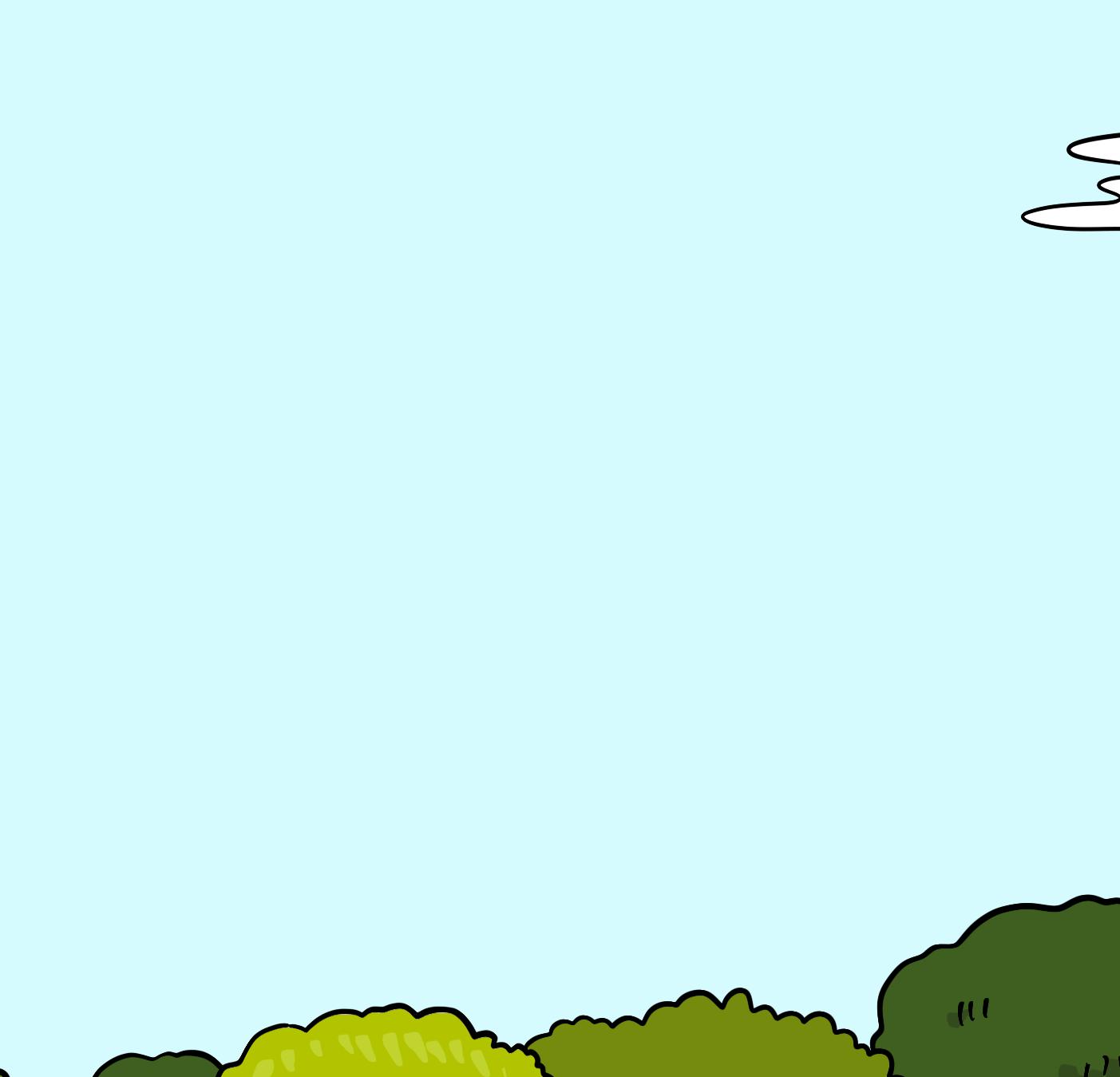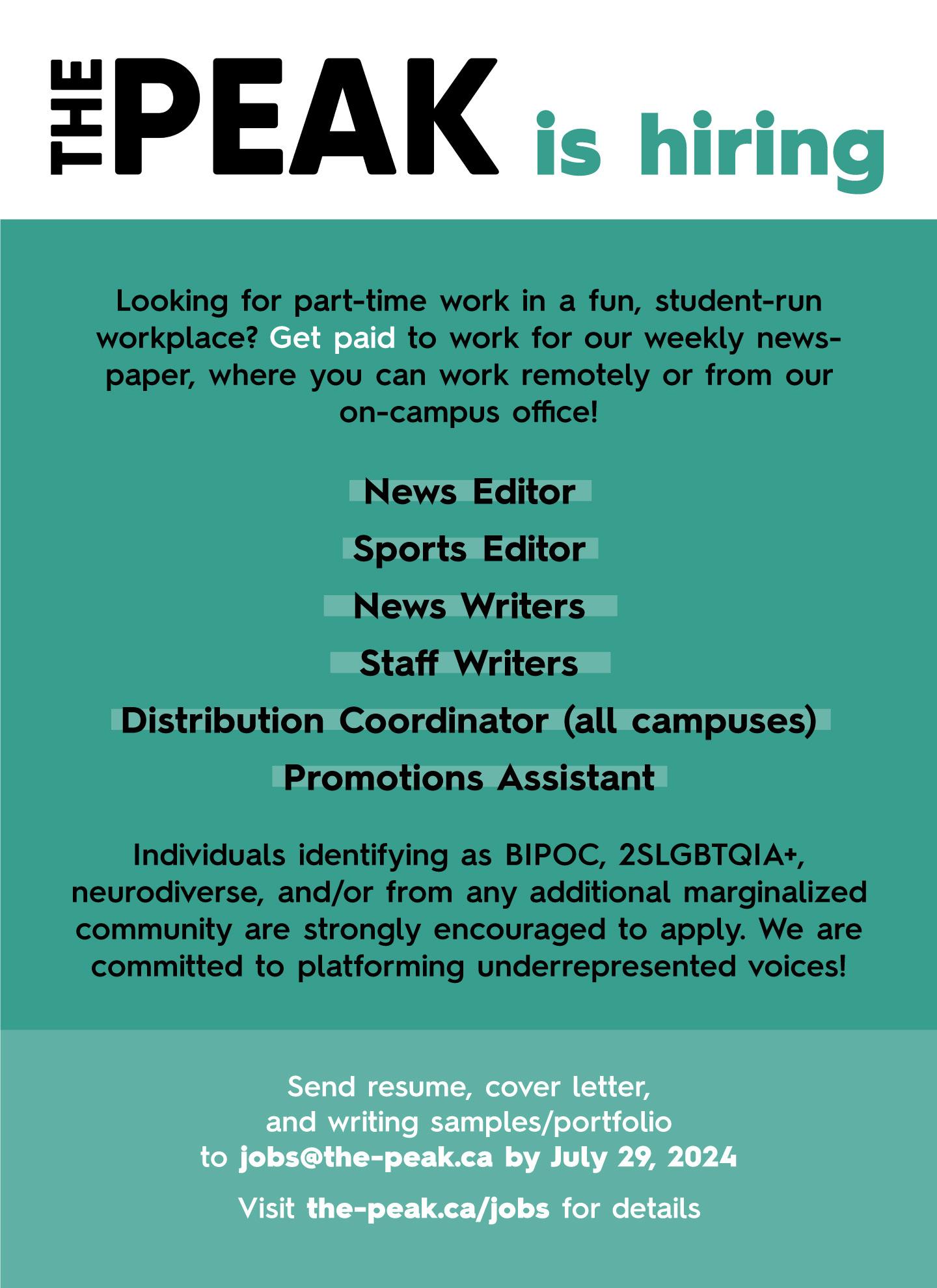





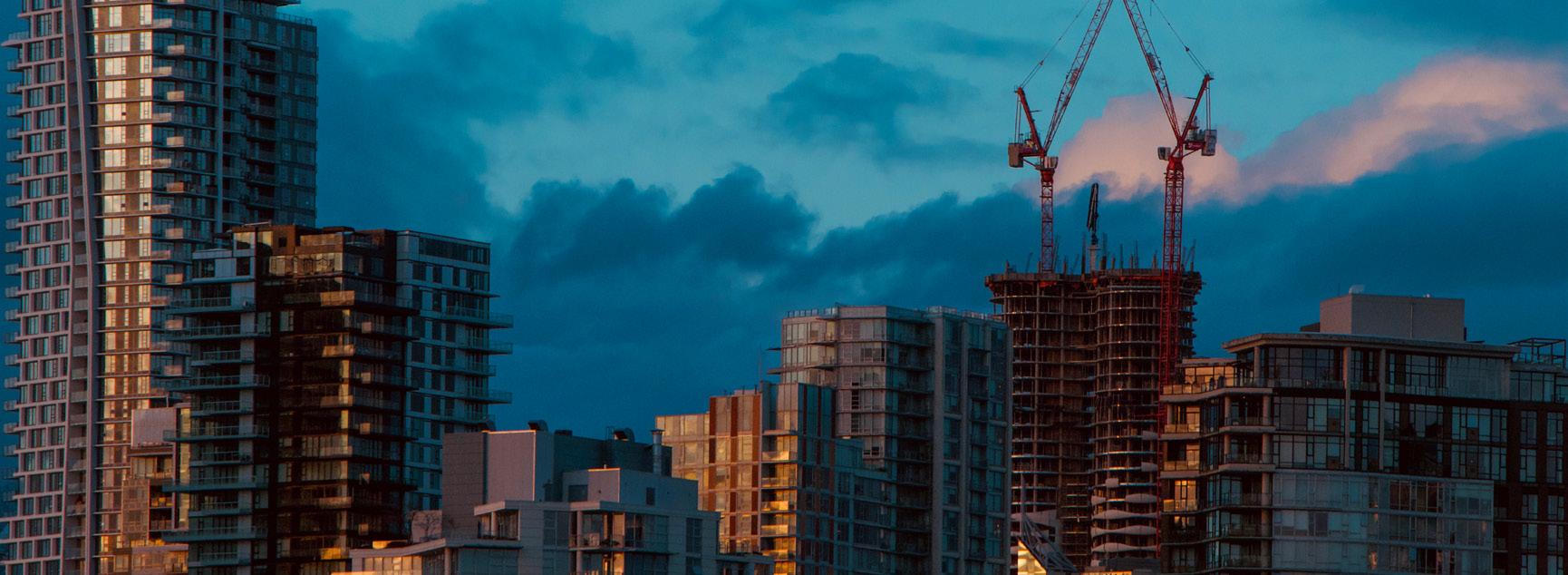
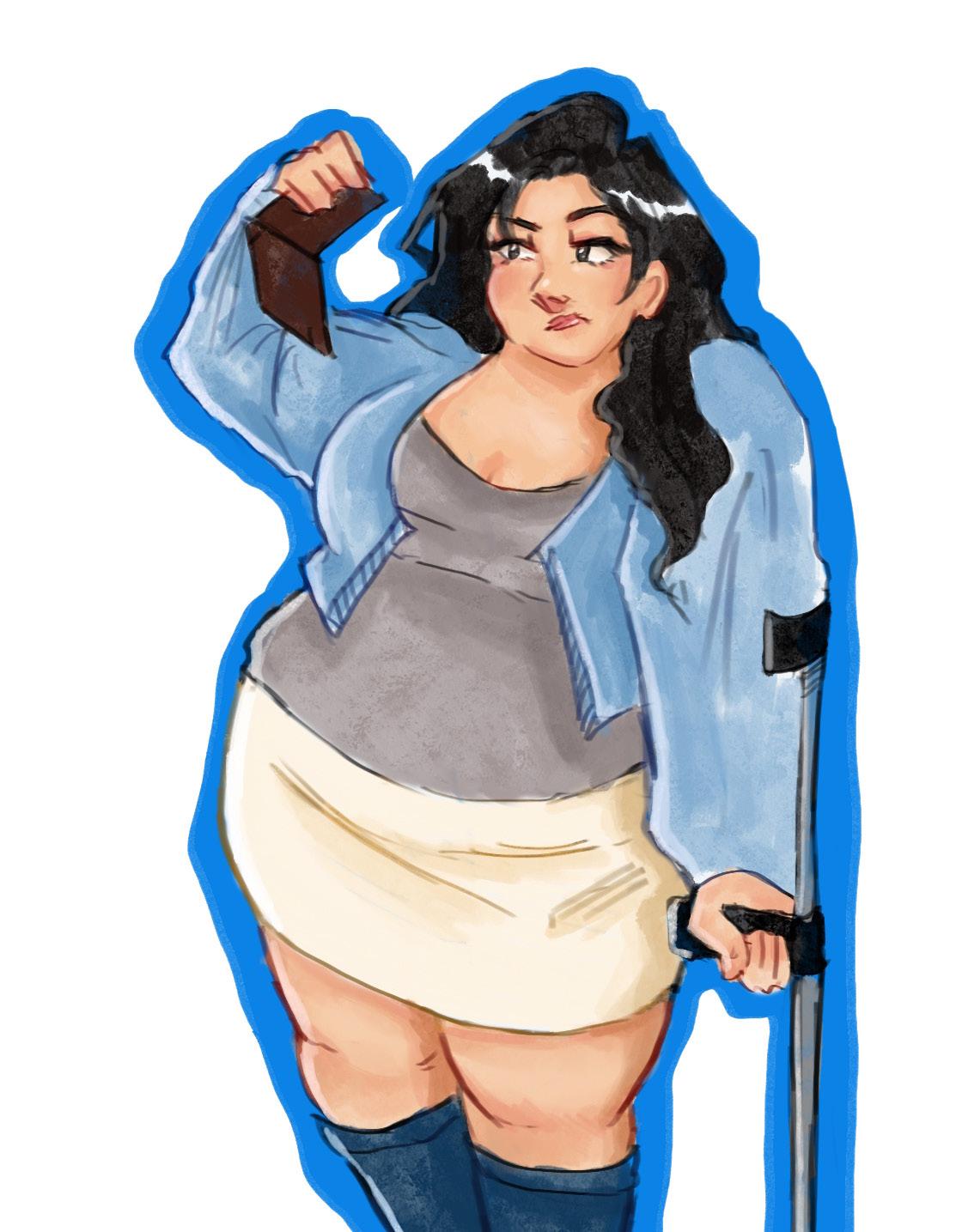
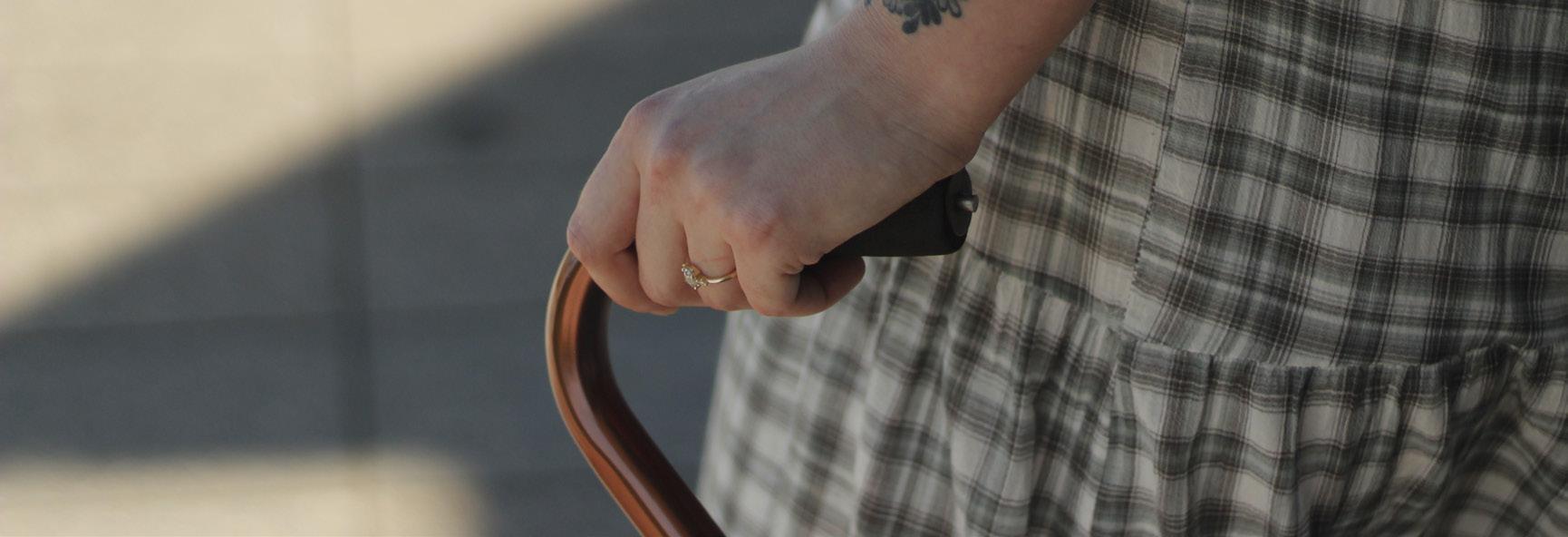
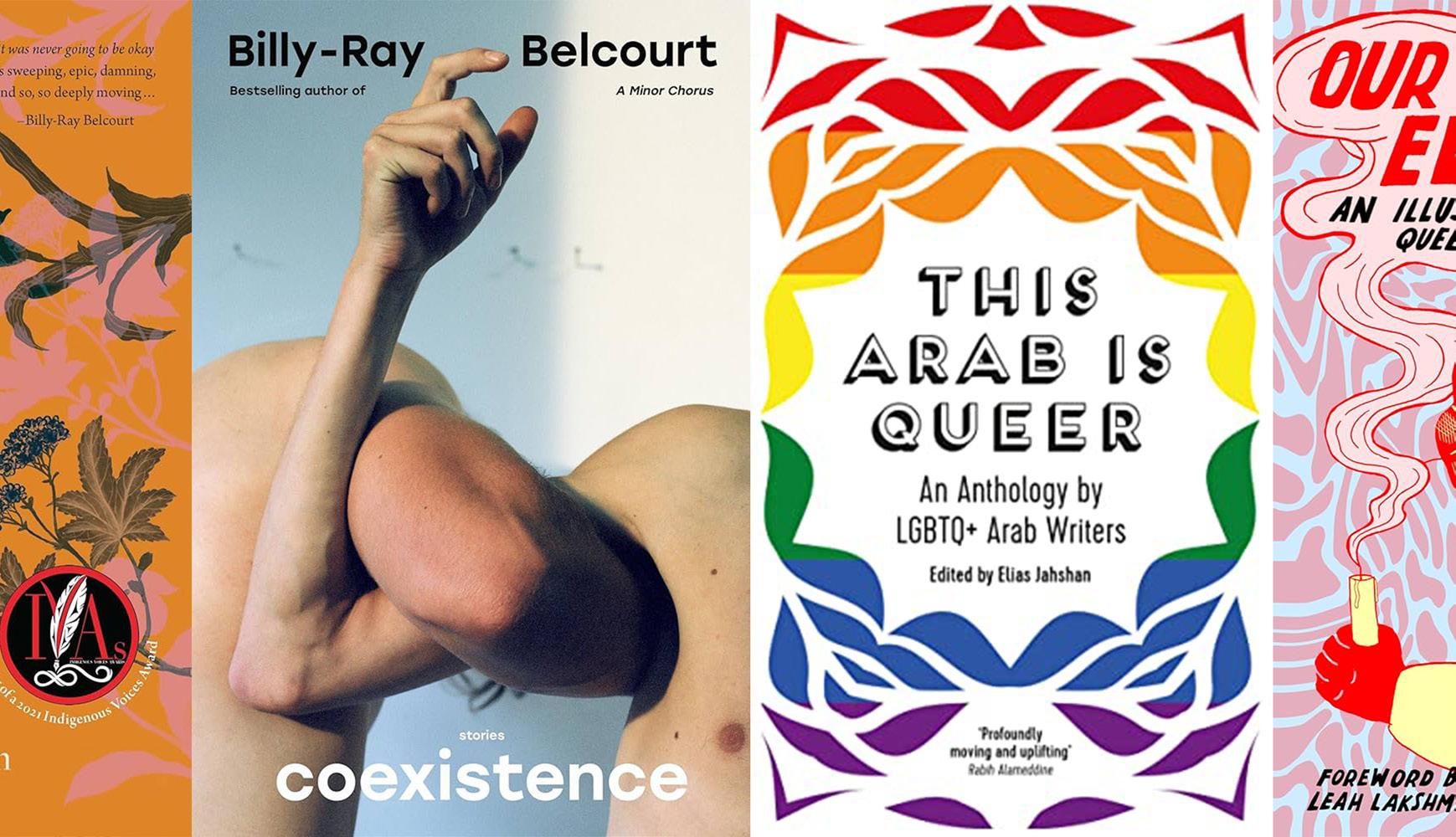
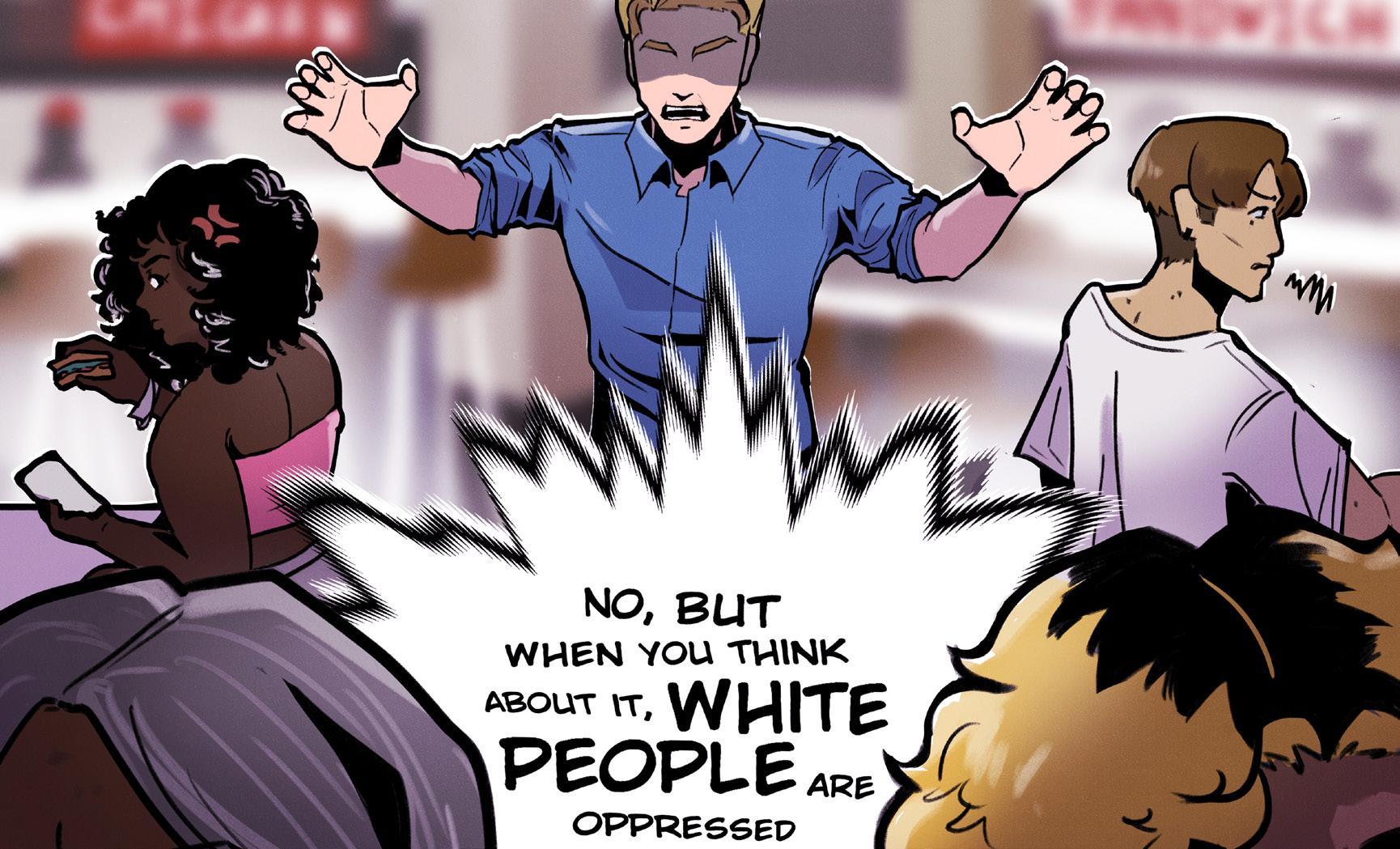
EDITOR-IN-CHIEF
Petra Chase eic@the-peak.ca
COPY EDITOR Michelle Young copy@the-peak.ca
FACT CHECKER
Karly Burns factchecker@the-peak.ca
NEWS EDITOR Karissa Ketter news@the-peak.ca
NEWS WRITER
Hannah Fraser
OPINIONS EDITOR
Olivia Visser opinions@the-peak.ca
FEATURES EDITOR
Daniel Salcedo Rubio features@the-peak.ca
ARTS & CULTURE EDITOR
Izzy Cheung arts@the-peak.ca
HUMOUR EDITOR
C Icart humour@the-peak.ca
BUSINESS MANAGER
Yuri Zhou business@the-peak.ca (778) 782-3598
STAFF WRITERS
Kaja Antic, Hailey Miller, and Yasmin Hassan
PROMOTIONS MANAGER
Juliana Manalo promotions@the-peak.ca
PRODUCTION & DESIGN EDITOR Abbey Perley production@the-peak.ca
ASSISTANT PRODUCTION EDITORS Minh Duc Ngo and Josh Ralla
PHOTO EDITOR
Gudrun Wai-Gunnarsson photos@the-peak.ca
WEB MANAGER
Subaig Bindra web@the-peak.ca
MULTIMEDIA EDITOR Emma Ciprian
BOARD OF DIRECTORS
Emma Jean, Payal Raj, Olivia Visser, and Yuri Zhou
PEAK ASSOCIATES
Aria Amirmoini, Amrit Kamaal, Sonya Janeshewski, Zobia Khalid, Den Kinanti, and Victoria Lo
COVER ARTWORK Andrea Choi
The Peak MBC2900 8888 university Dr. Burnaby, BC V5A 1S6 (778) 782-5110


Follow us on Instagram, at @thepeakatsfu and check out our YouTube channel, The Peak (SFU).
Find
The Peak is the official weekly student newspaper of SFU and is published every Monday. We’re funded by a student levy and governed by a Board of Directors. Any SFU student can apply to become staff. We reserve the right to edit submissions for length, as well as style, grammar, and legality. We also reserve the right to reprint submissions at any time, both in print and on web. We will not publish content that is sexist, racist, or otherwise prejudiced.
We acknowledge that The Peak’s office is located and our paper is produced, distributed, and read on the Unceded Coast Salish Territories of the xwməθkwəy̓əm (Musqueam), səlilwətaɬ (TsleilWaututh), Kwikwitlem (Coquitlam), Kwantlen, Katzie, Semiahmoo, and Skwxwú7mesh (Squamish) Peoples. Unceded means that this land was never surrendered, relinquished, or handed over in any way. We recognize that the unceded land that we occupy includes not only the SFU Burnaby campus, but extends to the land occupied by the Vancouver and Surrey campuses as well.
Landlords will now be held more accountable to provincial regulations
HANNAH FRASER · NEWS WRITER
On July 18, the BC government launched a website to “better protect renters from being evicted in bad faith.” When evicting a tenant for landlord use, landlords are now required to use the website to document information, such as who will move in after the eviction.
Landlord use is a legal reason landlords may evict contractabiding tenants, involving the landlord or their family member moving into the unit. However, bad-faith evictions happen when “a rental unit is not used for the purpose stated on the eviction notice for at least 12 months.” For instance, if the landlord does not follow through on occupying the unit and rents it again for a higher price, the original tenants “have the right to compensation.”
We’ve worked tirelessly through our BC Eviction project and systems change work to a ect this type of change.
AMANDA BURROWS
EXECUTIVE DIRECTOR OF FIRST UNITED
The update aims to “ensure that landlords who need to legitimately reclaim their units have a straightforward pathway to do so,” such as providing information on the legal requirements for evictions and the risks of issuing them in bad faith.
The Peak corresponded with Sarah Marsden, director of systems change and legal at First United, for more information.









Marsden explained that “BC’s high eviction rate” is attributed to no-fault evictions. No-fault evictions involve tenants being evicted for landlord use or landlord “sell the property, for demolition, conversion, or major repairs.”
The Peak also also corresponded with a BC Ministry of Housing spokesperson for more information. They said “BC had the highest eviction rate in Canada between 2016 and 2021, and a signi cantly higher percentage of landlord use evictions than in other jurisdictions,” according to estimates from a 2023 report.
The spokesperson said, “Not all evictions are reported to the BC Residential Tenancy Branch (RTB),” but now the RTB can collect more “accurate data” on evictions.
Starting July 18, landlords are also required to give tenants more time to dispute an eviction. Tenants now have 30 days instead of 15. In the case of evicting for “personal or caretaker use,” four months’ notice must be given, compared to the original requirement of two months. According to the spokesperson, “recent changes have increased the amount of time a landlord, purchaser, or close family member must occupy a rental unit after ending a tenancy for personal occupancy from six months to 12 months.”
The current penalty for landlords is to “pay the tenant 12 months’ rent if they don’t use property for the intended purpose upon eviction.” The landlord could be ned an additional $5,000 per day if they fail to pay.
“We’ve worked tirelessly through our BC Eviction project and systems change work to a ect this type of change,” said Amanda Burrows, executive director of First United, in the

press release. The organization’s BC
launched in 2022 is a “ rst of its kind
in
which “seeks to better understand evictions from rental
across the province and provide evidence for a law reform platform to improve tenant protections
First United has brought the provincial government recommendations centred around amending the Residential Tenancy Act, BC’s law that “outlines BC tenants’ and landlords’ rights and responsibilities.” Recommendations are made with the goals of preventing unnecessary evictions to reduce houselessness and displacement, making eviction a last resort, and improving procedural fairness and appeal rights.





The Forum discusses their wishes to collaborate with the SFSS
On July 10, The Peak attended the bi-weekly Simon Fraser Student Society (SFSS) Council meeting via Zoom.
Presentation from The Forum
Max Qiang, founder of The Forum, and Ashley Kang, president of The Forum, discussed their organization’s wishes to work with SFSS student unions and clubs to better support SFU student life. The Forum is a student-run events organization focused on elevating SFU’s student life and engagement. Since its inception in April 2022, The Forum has hosted over 22 events, with over 30,000 SFU students attending in total.
At the end of the day, Forum is an external organization. We are in a tight budget so our priority will be supporting our own clubs and our own student organizations.
RISHU BAGGA
VICE-PRESIDENT UNIVERSITY AND ACADEMIC AFFAIRS
Qiang explained that The Forum is not an o cial student organization under the SFSS and is fully self-funded through its events, not seeking pro t. Qiang also explained that “there may have been some misunderstanding, miscommunication between the SFSS and The Forum in the past,” so his goal was to “establish better communication with the SFSS through this conversation and to improve our transparency in the future.”
Ariana Shamsuddin, molecular biology and biochemistry councillor, asked Qiang how The Forum would go about marketing events to students if they were to collaborate with Departmental Student Unions (DSU). “Some DSUs do prefer to keep their Instagram pages a little bit more on the professional side,” Shamsuddin began. “I was looking at some of the previous videos that you had from your most recent event, and I’m not sure how that would y by, especially with the faculties involved.
“What are your expectations moving forward and how would that impact the total turnout if you were to change your marketing style?” she asked. Qiang assured the SFSS they would be able to successfully market events to students no matter which student group they would be working with. The Forum’s president, Ashley Kang, agreed, citing they recently hosted an all-ages event with an average turnout for The Forum.
Rishu Bagga, vice-president university and academic a airs, also voiced his concern about where the liability falls if something goes wrong, such as a medical emergency, at events. “At the end of the day, Forum is an external organization. We are in a tight budget so our priority will be supporting our own clubs and our own student organizations.”
Qiang stated that the liability may fall on the venue where they host their events. Alternatively, Qiang noted The Forum purchases liability insurance if the liability was to fall on them.
The Forum and the SFSS did not formally agree to collaborate by the end of this meeting.
Reports from the executive committee
The executive committee mentioned their plans to start an SFSS TikTok for more student engagement around the SFSS. They also mentioned doing a Fall Welcome Concert at East Parking Lot for students. The Council approved a maximum budget of $65,000.
Read the full article with complete highlights on our website.

IZZY
Picture this: you’ve just spent a long day enjoying the lovely summer weather. You’ve been baking in the sun, dipping in and out of the water to cool down. As you’re heading back home, you feel a sudden itch on the side of your arm. You reach towards the itchy spot, realizing with horror that you’ve been bitten by the worst bug known to mankind — a mosquito.
I may not like insects, but mosquitos are especially detestable. Those tiny little bites can ruin a great summer’s day, especially if you’re nibbled at more than once. Any time a tiny mosquito pricks me, my bitten body part swells up like no tomorrow. I once had a bite on my leg swell to the size of my palm. I had to ice my leg down for a good week before the swell began to quell.
I’ve tried everything. Repellents, natural oils, fly swatters, you name it. Still, those pesky annoyances always find a way to nibble at me. I have never been a fan of mosquitos, and frankly, I never will be. Mosquito, you’re not Edward Cullen — people aren’t lining up along the block begging for a bite from you. Watch out for the next time you come my way, I’ll be armed with bug spray.
WORLD CUP WOES
2026 is fast approaching, solutions for costs and tourism are farther away

The FIFA World Cup will be hosted by Canada, the US, and Mexico in 2026, with Vancouver hosting seven of the 13 games being played in Canada. Vancouver has had some experience with major international sporting events in recent years, with the 2010 Olympic Winter Games and the 2015 FIFA Women’s World Cup. However, with mounting concerns about affordability in the region, the decision to host the upcoming World Cup overlooks the needs of locals.
The FIFA World Cup is the most-watched sporting event in the world, and is predicted to generate significant short-term revenue for the City of Vancouver. However, the up-front cost of hosting is difficult to overlook. An estimate from 2022 put the cost between $240 million and $260 million for five games. With an extra two games, plus costs rising across the board, the most recent estimate was nearly double that figure.
If you’re wondering where this money will come from, you’re not the only one. Vancouver taxpayers will be on the hook for funding at least part of this event, though the exact amount is not yet known. The Canadian Taxpayers Federation is urging the provincial and municipal governments to be transparent about the tournament’s costs, as it’s questionable whether Vancouver can actually afford this. There is a cost of living crisis across Canada — especially in Vancouver. While some of this financial support is coming from the federal government, there is still some warranted hesitation regarding the high price tag. A recent poll found that 61% of Metro Vancouver residents believe the potential short-term economic benefits are “not worth” the cost.
The World Cup is supposed to help raise tourism profiles for host cities, which can be seen as a worthy investment — though it’s not like Vancouver is hard-pressed for generating tourist interest. The provincially-funded tourism organization Destination BC claims the seven games will generate over $1 billion for the provincial tourism sector during the tournament and the five years following. Officials also estimate that over one million visitors will visit in this time frame, with approximately 350,000 fans arriving for the tournament alone — but where are they all going to stay?
Vancouver already has a hotel room shortage without accounting for hundreds of thousands of fans wanting to catch some of the World Cup action. Destination Vancouver has warned the demand for hotel rooms during the tournament will “exceed supply,” with no direct plans to address the disparity before 2026. One method Vancouver used in the past to aid in
rooming demands was docking cruise ships nearby — though this was only done for security personnel during the 2010 Winter Olympics. The hopes that this tournament will generate mass revenue for the tourism industry can be dashed if said industry is incapable of accommodating these visitors.
This money would be better spent on the ongoing housing and grocery crises, among other needs.
The housing crisis is another issue being ignored while the hype for the 2026 World Cup grows. 1,100 housing units were developed in Vancouver’s Olympic Village prior to the 2010 Olympics. Only 125 — half of what the city originally promised — were affordable housing units. How does that benefit locals? The largest construction projects for the World Cup will be renovations to BC Place and the addition of Fan Festival amenities at the new PNE Amphitheatre. However, we should still worry about Vancouver’s houseless population and what’s to come in the lead-up to the 2026 festivities. Vancouver mayor Ken Sim has shown no remorse for displacing many in the Downtown Eastside, and while developments for the World Cup aren’t slated for that direct area, there could potentially be drastic consequences for residents in that region. Sim has used the Vancouver Police Department to remove residents from the Downtown Eastside for years, and is now talking about making neighbourhoods “more vibrant” to have a “successful FIFA 2026.” If his idea of success depends on displacing people from their homes, no one should support the city’s decision to host the tournament.
With the cost of living looming heavy over the region, it’s understandable that many are hesitant to fully support the World Cup decision. The event is a massive expenditure, and this money would be better spent on the ongoing housing and grocery crises, among other needs. The city has less than two years before kickoff in June 2026, and with a myriad of issues ahead, this World Cup looks set to cause more chaos than celebration.
Content warning: mentions of medically assisted death.
It’s long-past time to talk about how many disabled Canadians struggle to financially support themselves. In BC, groceries alone can cost around $1,263 a month, which is an even harder hit for the 16.5% of disabled Canadians living in poverty. The new Canada Disability Benefit is an upcoming benefit for disabled folks who meet certain qualifications. While it’s a step in the right direction, the monthly payment of $200 is barely enough to cover basic needs in this tense economy.
BC’s Persons with Disabilities assistance program grants eligible single recipients a maximum of $17,802 a year. Advocates have talked about how this forces disabled people to continue living in poverty, as the low-income threshold in Canada is $25,252 for a “single adult household.” Those unable to work due to their disability have no choice but to live below the poverty line. Those who can work are only allowed to make $16,200 before their benefits are clawed back, which is still not enough to survive on. The new benefit claims it will “reduce poverty and support the financial security of workingage people with disabilities.” With payments starting July 2025, it will grant a maximum of $2,400 annually per person, which is something, but it’s certainly not significant.
The high percentage of disabled Canadians who live in poverty tells us the money being provided isn’t enough. Not only is the new benefit insufficient, but it’s also relatively difficult to acquire in the first place. To receive the benefit, you need to
BASIC NEEDS
Saving money or gentrification?
Using the bathroom in seclusion is a basic right we all deserve. Bathrooms provide a private area to maintain our bodily needs, clean ourselves, apply makeup, and even have a safe haven to cry. They’re essential for an equitable society. However, for the houseless or those who may use the restroom more frequently, this need is barely being met due to the lack of public bathrooms in Vancouver.
It’s no surprise the city has decided to remove two public restrooms in the Downtown Eastside, as the municipal government has continually shown it doesn’t care about the marginalized populations that live there. Earlier last year, the forced displacement of people living in tents on East Hastings left a vulnerable population without a safe or familiar area. This was home for many people — the streets, people, the local shops. And street sweeps are a common occurrence, as this year in January the city continued the displacement of houseless individuals in East Hastings again.
While many may argue the closure of public restrooms is due to cost, keep in mind that the city spent $409,000 dollars just to dispatch police officers for the decampment in January. A public toilet costs about $37,000–$48,000 annually. Moreover, the city’s willingness to spend $645,000 on a public toilet in Yaletown, a higher-income neighbourhood, clearly shows an ulterior motive.
Many businesses who have bathrooms restrict them to paying customers only, or discriminate against houseless people. Often when requesting a key, houseless people are told the bathroom is out of order, despite seeing others come out of it. One individual told Global News they ended up having an
be receiving the Disability Tax Credit. However, the credit can be difficult to acquire — Global News reports that only 40% of disabled Canadians receive it. Some medical professionals refuse to sign off on the program, and the requirements are challenging to navigate, with many applications being wrongfully rejected due to “inconsistencies in how applications are reviewed.”
Some disabled people have talked about how the lack of access to basic necessities makes Medical Assistance in Dying (MAiD) feel like the only option left for them. People shouldn’t have to choose between life or death because they can’t afford to live. Disabled people already face barriers like systemic ableism and inaccessibility. Their health and wellbeing should be prioritized — but instead the government treats them like an afterthought.
Getting support for those who need it is not easy, nor is it timely. Finding caregivers, treatments, and all the other basic necessities that people need to live involves long wait times and headaches. What we really need is better allocation of tax dollars. Instead of the government signing multi-billion dollar deals with auto manufacturers and hosting the World Cup, they should direct that money toward support for people who need it.
Organizations like grassroots-based group Disability Without Poverty are helping to end poverty for those living with disabilities in Canada. They entail a clear set of demands

that would help change the benefit for the better, like easy application and inclusive eligibility for “permanent or temporary, stable or progressive, or episodic” conditions. No one should struggle to put food on the table because of a disability. If you can, reach out to politicians of all levels and ask them to raise the benefit amount.

accident at the sixth shop they approached. The incident was very embarrassing and dehumanizing — no one should have to go through that.
People can only walk in that discomfort for so long before they end up having an accident or get an infection.
Being a menstruating houseless person is an even more cumbersome process. While shelters provide a limited amount of menstruation products, it’s not even enough to last an
average person a day. Many people resort to rolled up toilet paper, which can only last so long before it leaks. Walking around from business to business just to get denied only lengthens that journey to privacy. People can only walk in that discomfort for so long before they end up having an accident or get an infection.
Vancouver is slowly expanding their decampment efforts beyond East Hastings, destroying rich communities and cultures. The ongoing CRAB Park evictions on Waterfront Road continue to displace houseless people under the guise of safety. The truth is, the city does not care about them as much as those with more privilege. They just want to have the highest paying individual in every area, and the start is by denying basic human rights like bathrooms. There’s no doubt the city can afford to increase access to public restrooms for everyone, and it’s about time they do so.
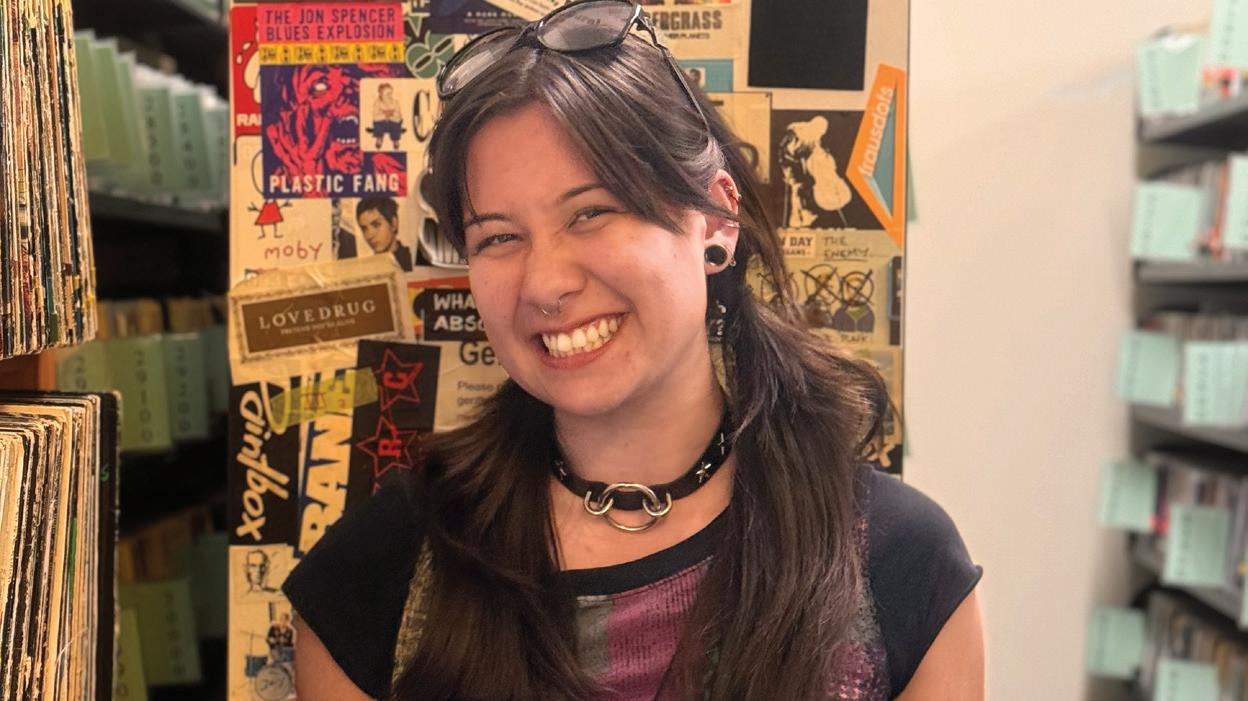
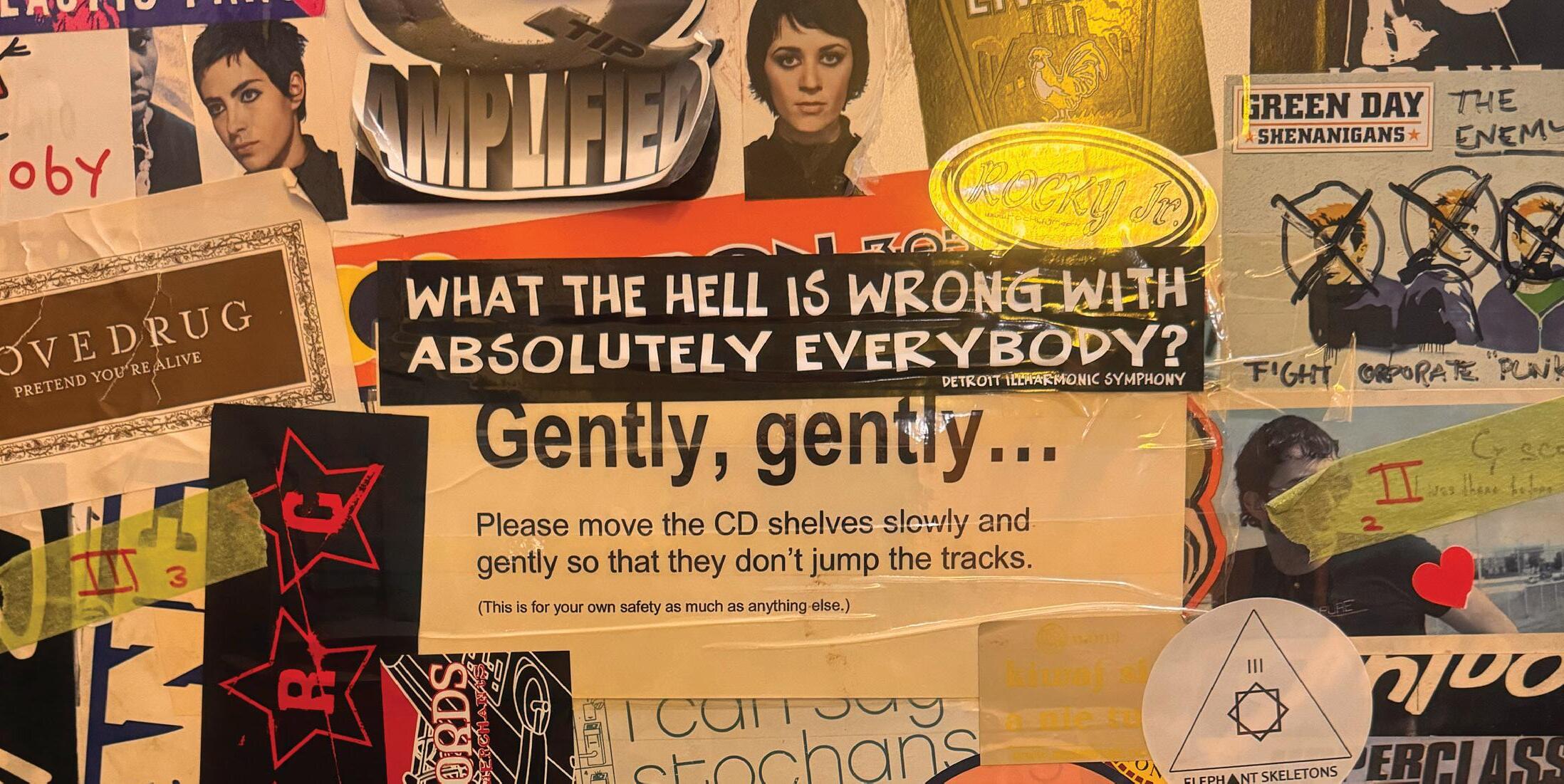
"Wilkie incorporates her own exploration of life into her show, giving it a personal touch. She frequently attends concerts of various genres, from well-known artists to underground shows."
On a sunny afternoon, I drove up to the SFU Burnaby campus, jamming along to all sorts of music and listening to a friendly voice on Racoon City, one of CJSF’s radio programs. As I hurriedly parked my car and made my way to the Student Union Building, I found the CJSF studio and office on the first floor; a quaint, exceptionally decorated space filled with music and pop culture memorabilia. I had heard their voice, I had listened to their music choices, but I had yet to see the face behind the sound. When I entered the office, Katie Wilkie was sitting on a couch awaiting my arrival. From the first time I listened to her show to the time I actually met her, I already knew we would be great friends!
CJSF is our own campus radio station. They officially began back in 1974 as the Simon Fraser Campus Radio Society, beginning to transmit only to Shell House and Louis Riel House (now closed) residences on campus. Now, they transmit to most of the Greater Vancouver region. Their programming mostly focuses on diverse and alternative content, amplifying voices, points of view, and music rarely heard in mainstream media; they’re run by both paid staff and several volunteers from campus and the community.
Wilkie is a fourth year student here at SFU, finishing up her degree in education. She is a connoisseur of “music, art, and entertainment.”
A jack-of-all-trades, she enjoys snowboarding and surfing, as well as crocheting and fabric art. “I really love anything related to outside; anything related to music; anything related to racoons,” she told me. Some of her favourite artists include SZA and Tyler, The Creator, which immediately piqued my interest as a fellow fan. She told me how Ctrl by SZA was one of the album’s that “got her into music” and “into the depths of lyricism and all the different types of avenues of music.”
Racoon City, airing since March 2023, features a wide range of music, from underground to well-known artists. I asked why the show is called Racoon City. “I love answering this question. It’s because of the deep racoon infestation at SFU” — it seems like I wasn’t the only one who had asked. “I just kept seeing raccoons everywhere all over SFU and I knew my radio show was going to be at SFU,” she explained. “It was literally racoon city up here,” she said, recounting tales of her friends who live in residence who have had first-hand experience with the mischievous yet adorable trash pandas.
Wilkie’s journey as a radio host started back in September 2022, when she walked by the CJSF room and was immediately intrigued. She began doing open-mics at the station, and through that she got to learn about many “local artists, Canadian artists, [women] artists, and queer artists.” Some of the local artists Wilkie has featured include Nanaimo’s Apollo Ghosts, Kelowna’s Yukon Blonde, and Vancouver’s We Hunt Buffalo. The community radio station gave her
WRITTEN BY YASMIN HASSAN
“many more outlets to look for cool music.” Eventually she decided she needed her own show, and so she pitched it to Robin Eriksson, the program coordinator, who gave it the green light!
When asked about people who have influenced her, she spoke about the “powerful lady-boss” Robin! “We did a meeting one time on how I can improve my show and she just knows what it’s like to be a woman in a [man]-dominated space . . . it was interesting to gauge her perspective.” Wilkie told me how Robin was a big influence on her being at CJSF, and it warmed my heart. She also mentioned how her family has supported her: “My dad is a really big influence on my show because he’s my number one fan, and he’s the one who asked me to post my shows online.”
Wilkie incorporates her own exploration of life into her show, giving it a personal touch. She frequently attends concerts of various genres, from well-known artists to underground shows. “On Monday or Sunday, I’ll just recap my week,” she explains, from show reviews she watched during the week like Jujutsu Kaisen to musical performances or new albums she has listened to. “I came up with Racoon City before Racoon City started,” she said, explaining how one of the most memorable moments was the first time airing the show, when all her hard work finally came to fruition.
Another moment I loved hearing about was the Mother’s Day episode, in which Wilkie’s mom “listened to it and basically cried telling [her] ‘Katie, you really get it.’” Wilkie’s mom expressed how her daughter “understood what it’s like to be a woman in the workforce that moms everywhere occupy all the time. They go underpaid, underrecognized, underappreciated consistently.” So Wilkie focused on appreciating mothers for all they do and put aside.
When asked about how she connects with the SFU community, she said, “I connect to them through the way I talk. I’ve been told that I have a really positive attitude towards my show so I’m always telling people to have a good day and that they’re doing great.” She’s always promoting SFU clubs and businesses as well as the local music scene, saying “whichever show I’m going to, you can go to, too!” I remarked that despite the fact I didn’t know her personally, I felt as though I was listening to a friend talking on the show. She laughed and agreed with me saying, “If you’re listening, you’re a friend.”
The specialty of radio is something that can’t be replaced. The exclusivity of having a show live is something that truly garners FOMO. If you’re ever looking to listen to something new, old, popular, or niche; tune in to Raccoon City with Katie Wilke, airing Tuesdays from 12:00–1:00 p.m.

Sometimes pride is a process, and it’s not always easy
WRITTEN BY OLIVIA VISSER
Around 57% of adults in Canada use a mobility aid. If that doesn’t sound correct to you, it’s probably because you’ve never realized that glasses are an assistive device. However, glasses have become commonplace in society — with over 2 billion people globally having vision impairments. Perceptions of disability are often tied to preconceptions; for instance, those with invisible or less visible conditions are often overlooked in discussions about disability. The visibility of my condition changes regularly, and when it’s invisible I feel that way, too. But when I do require a noticeable mobility aid such as a cane, I still struggle to feel accepted. July is Disability Pride Month, and for me that looks like practicing self-love by embracing my mobility aids.
Sometimes the best response to “what happened?” is a brief “I decided to use my cane today.”
I regularly rely on custom orthotics and braces, which aren’t noticeable to others. The most visible device I use is my cane — something I’ve struggled to come to terms with needing and displaying. I’d like to think I’m proud of my cane, but I still can’t shake the shame I sometimes experience when using it. On my good days, I’m capable of many different types of exercise. I sometimes feel embarrassed when I use my cane after a long bout of good health, because I worry people will think I’m faking. I also feel pressured to fit into popular beauty standards, which tell me a mobility aid somehow “takes away” from an outfit. The Guardian reported only 0.02% of models in fashion campaigns have visible disabilities. As a result, mobility aids are often overlooked in media and fashion culture — leading people like me to assume we’re unwelcome. These ideas are all rooted in internalized ableism, which is when a disabled person takes on some of the stereotypes imposed by society.
I struggle to avoid internalized ableism sometimes, with uncomfortable glances from folks who know nothing about me. The other day, my cane triggered a conversation among a couple behind me. They recalled a friend who they thought was exaggerating their illness, wondering why they’d need a wheelchair at their age. I know they weren’t necessarily assuming the same about me, but no one wants to know their appearance reminds you of someone you assume is “faking.” What they didn’t see was my partner begging me to use my cane earlier that day, after seeing how much pain I was in. It can take time for some people to accept their mobility aids and actually use them when needed.
Situations like these remind me of the stigma associated with young people using mobility aids, and the idea that we should be able to outgrow these devices with physiotherapy or lifestyle changes. Knowing that some people hold these beliefs makes it difficult to feel comfortable in public spaces. Those who have dynamic disabilities — disabilities that affect your level of function differently depending on the day — also face unique prejudices. Yes, I can walk without my cane, but it can be difficult. It can hurt. It may mean I have to spend the next day resting. It doesn’t mean I don’t truly need a cane.
Many mobility aids are not easy to use, which is why it baffles me when people assume young folks use them for attention or aesthetic. My cane makes it difficult to manouevre around people in tight spaces, and challenging to do two-handed tasks or carry multiple items. It can

slow down my walking time, lead to fatigue in other parts of my body, and is a pain to find space for when I sit down. This is partly because most public spaces aren’t accessible enough, but it’s also just clunky to have to lug around an extra item of its size. With or without mobility aids, please don’t assume someone is faking their illness. You’re not entitled to know about their medical condition unless they divulge that information voluntarily.
There’s also this stereotype that a mobility aid means someone is unwell, when it can be quite the opposite. Sure, I wouldn’t need my cane if I were able-bodied. But, my cane allows me to stay healthy and protect my body. Sometimes the best response to “what happened?” is a brief “I decided to use my cane today.” Normalize not needing a deeper explanation.
I’d be lying if I said it’s always been easy to feel pride about my disabilities. What is there to be proud of? Chronic pain? Debilitating fatigue? I don’t personally feel like my disabilities define me as a person — but they’re a huge part of who I am. And while I’m not a big fan of calling disabled people brave for surviving within their circumstances, I’m proud of myself for what I continually overcome. To deny space in my identity for my disabilities would be to deny an entire part of myself. Disability pride is the joy of being unapologetically yourself — disability and all.
I love my mobility aids. I love the places they’ve helped me reach, and the pain and discomfort they’ve saved me from. I love the stickers I cycle through on my cane, which make me grin when I look down. My favourite devices are my cotton candy-coloured wrist braces and moon bunny compression gloves. Feeling cute on a bad pain or mobility day makes a world of a difference sometimes. I’m not fond of my awkward ankle casts that I once had to wear for six weeks straight, but they helped preserve my ankle mobility after multiple injuries led to the end of my running career. I’m grateful that my body can still walk, hike, climb, swim, and more. I’m proud that my assistive devices make this possible for me.
To deny space in my identity for my disabilities would be to deny an entire part of myself.
It can take time for some people to accept their mobility aids and actually use them when needed, especially with the constant looks and questions from strangers. No, I’m not interested in how your friend’s cousin cured her joint pain with some fad diet or tea. No, you don’t have to feel bad for me. I’m doing just fine most of the time. While I know their intent is likely not malicious, privacy is still appreciated. There’s an exhausting feeling of defeat when I’m asked about a device, because I know it means I’ve stood out from the crowd. Still, I know it doesn’t reflect poorly on me, but is a reflection that disability awareness still has a ways to go. Leave your assumptions at the door when you see a mobility aid user, and remember that we’ve likely heard it all before.
I’m proud of my mobility aids because they’re an extension of myself. They represent the mental strength it takes to take a stroll around my neighborhood when I’m not feeling well. They signify my ongoing commitment to physical strength and endurance — something that has taken extensive effort. I also know that each individual’s experience with mobility aids is so different from the next. You may not always notice us, but we exist.
These artists showcase the intersections between art, disability, and queerness

ILLUSTRATIONS: Den Kinanti / The Peak



Peaches N Screams is an “Afro-Indigenous drag icon” who can be seen across Vancouver at raves, cabaret performances, and more. Under her brand and fandom, Peach Nation, she has released a merchandise line with designs that are reminiscent of her sharp, tattoo-like makeup and trademark black lipstick. A versatile performer, you can catch her posing among dreamlike clouds or tearing up a stage in the perfect Monster High outfit. Catch her on July 25 at Peaches’ Palace in lək ̓ʷəŋən (Victoria), a monthly special that will showcase “the hottest local BIPOC performers from drag, music, burlesque, comedy, and beyond.”
Lavender Flame says she does it “for the girls and the gays, that’s it.” She is “autistic and proud,” and told Disability Drag Collective that her love for Vancouver’s drag scene stems from “the creativity, the diversity in our local scenes, and the passion every drag artist has for their work.” Her colourful chic shines through in her goddess-like outfits as well as her playful pinup persona. Recently, she performed at The Birdhouse as part of Man Up’s Spotlight Showcase, and continues to appear at venues across the Lower Mainland.

dislexia is known for more than just their sultry photoshoots and event hosting. Their performances for Vancouver’s Next Drag Superstar were enough to place them in the finals of the competition. They bring sweet, spice, and everything nice to every party they present themselves at — you can’t say dislexia is no fun when they’ve taken the stage as a vulva. There’s no predicting where dislexia will be next, so follow them on Instagram: @disslexiaaaaaaa (that’s seven a’s)!
On July 28, Karlie Hart will be hitting the stage at Numbers Cabaret as part of “The Rise and Fall of a Davie Street Princess,” a tribute to rising pop and drag sensation, Chappell Roan. This will be the second performance that Hart has done as part of this tribute series, as she also headlined the first instalment that occurred on May 12. Having first come out as a trans masculine enby at the age of 19, Hart continues to make her presence known throughout Vancouver as she performs in her fifth trans year. He’s so versatile that at one moment, you could see her as a cackling Joker; at the next, he could be rocking as a giggly gymnast!
Boy Gorgeous is a “queer non-binary disabled drag monster” who is based in lək̓ʷəŋən. With ornately painted makeup that ranges from dramatic cat-like eyeliner to eyelashes like butterflies, they are a fierce and fun performer to watch. They will be performing at Studio Access on July 28, an event otherwise known as “Victoria’s accessible, sober, disabilityconscious, low-sensory, covid-aware drag show.” When they aren’t leaving their heart out on the stage in their performances, they can be found drawing and designing intricate tattoos at The Brass
Studio.

IZZY CHEUNG ARTS & CULTURE EDITOR
Nestled in a quaint corner south of Commercial-Broadway SkyTrain station is Cross & Crows Books. This cozy haven is “the friendliest, queerest bookstore in East Van,” and features a variety of queer literature for all to explore. On Sundays from 10:00 a.m. to 12:00 p.m., they offer mask-mandatory shopping and reduced lighting. Buy their books at their store, or online with shipping or local East Vancouver-based deliveries. Here are some of our suggestions for your next summer read. All books can be purchased at crossandcrows.com

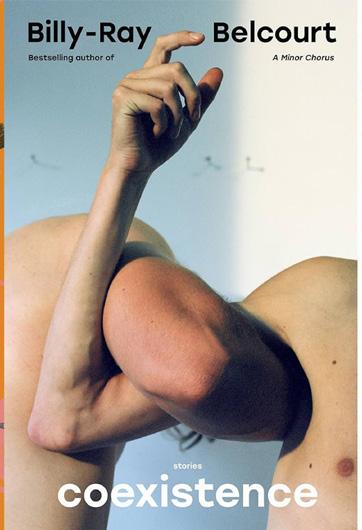
it was never going to be okay
jaye simpson’s moving poetry and prose book navigates her intergenerational trauma as a trans woman. simpson is an Oji-Cree Saulteaux writer and poet, and also goes by her drag queen name, Persephone Estradiol. The book features lush poetry such as “sea glass,” a poem comparing the speaker to sea glass that cascades down the page like drops of water down a windowpane.
Coexistence
This collection of fiction, published on May 21, highlights “intersecting stories of Indigenous love and loneliness.” It follows a range of Indigenous voices as they explore their own paths towards finding love and seeking comfort within themselves. Written by Billy-Ray Belcourt, a member of the Driftpile Cree Nation and an associate professor at UBC’s School of Creative Writing, Coexistence reminds readers of the message it intends to spread — the beauty of coexistence.
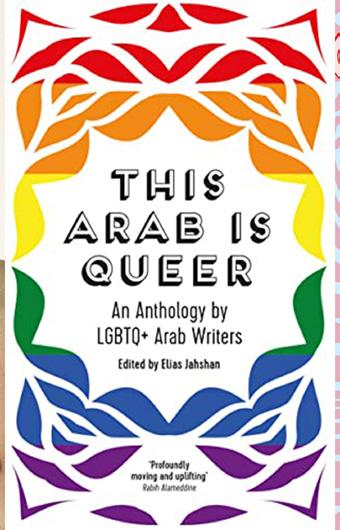
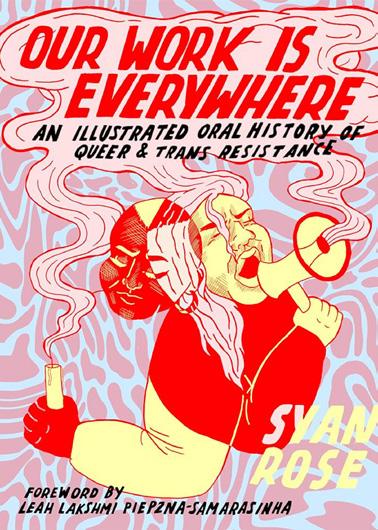
This Arab is Queer
Featuring stories from writers such as Khalid Abdel-Hadi, Saleem Haddad, and Tania Safi, This Arab is Queer brings together the stories of 18 queer Arab writers. These retellings of personal accounts bring to light experiences that uplift their intersecting identities as well as remind readers of the personal challenges faced by them. Follow along as these writers describe memories such as “touring overseas as a drag queen to a concert in Cairo where the rainbow flag was raised to a crowd of thousands.”
Our Work Is Everywhere
Comic artist Syan Rose and writer Leah Lakshmi Piepzna-Samarasinha combined their artistry to create Our Work Is Everywhere, a graphic novel amplifying the history behind queer and trans resistance. Elements of “Black femme mental health, Pacific Islander authorship, fat queer performance art, disability and health care practice, sex worker activism, and much more” find themselves imbued within the narratives. The pages are beautifully oriented with chunks of text circling around richly patterned drawings of individuals like Ceyenne Doroshow and Geleni Fontaine.
The first time I saw Chilliwack’s District 1881 on social media, it was being compared to Disneyland. Walking through the narrow pedestrian alleyways, the brick façades of the nearby shops and restaurants give off a Main Street USA vibe.
This compact shopping centre is about an hour from SFU’s Burnaby campus via the TransCanada Highway, and can be reached by transit when taking BC Transit bus route 66 — the Fraser Valley Express — which departs from Lougheed Station.
It was busy when I went, but didn’t feel overcrowded at all, as visitors flitted between the small shops and restaurants. Lots of the shops allow you to bring your furry friends along — dogs of all sizes pranced around the district, happily taking in the sights alongside their humans.
There is no shortage of options for eating and drinking in District 1881. I checked out the Smoking Gun Coffee Roasters Café, a bright, charming coffee shop with its own merchandise line. I tried an iced matcha latte with oat milk, and it was one of the best I’ve had. The café also had plenty of food options, from breakfast sandwiches to vegan and gluten-free baked goods. I paired my latte with a vegan s’mores cookie, which was a soft and tasty reminder of campfires in summers past.
FOLLOW THE FOOD TRUCKS!
There are many more restaurants featuring various cuisines, and those with patios were practically buzzing as patrons enjoyed the food, beverages, and warm weather. You can find Mexican cuisine at Hugo’s Mexican Kitchen, Italian cuisine with Elevated Pizza Co. and the Azzurri Italian pasticceria, along with seafood at Bow & Stern. There’s also the breakfast-focused Uptown Grill, the classy Fortitude Wine Bar and The Offy bistro, and craft brews galore with added pub classics from Bricklayer Brewing and Field House Brewing.
Lots of boutique-style clothing stores dot the alleyways, with many featured products made in the Fraser Valley. The gift shops don’t feel like the traditional tourist trap you may see around Downtown Vancouver, as the souvenirs are either locally-sourced products or inspired by the surrounding area in some way.
You can window shop for clothes at Magnolia & Oak and Hunni’s, or check out my personal favourite — CR Sabers, which has retro video games, cosplay accessories, keychains, and lots of lightsaber parts. It’s paradise for gaming, comic book, and Star Wars enthusiasts.
Spruce Collective carries a lot of West Coastinspired goods, from clothing to stickers to puzzles. It also holds lots of home goods and décor, with many candle scents for the fragrance fans reading this. The Local Space is full of
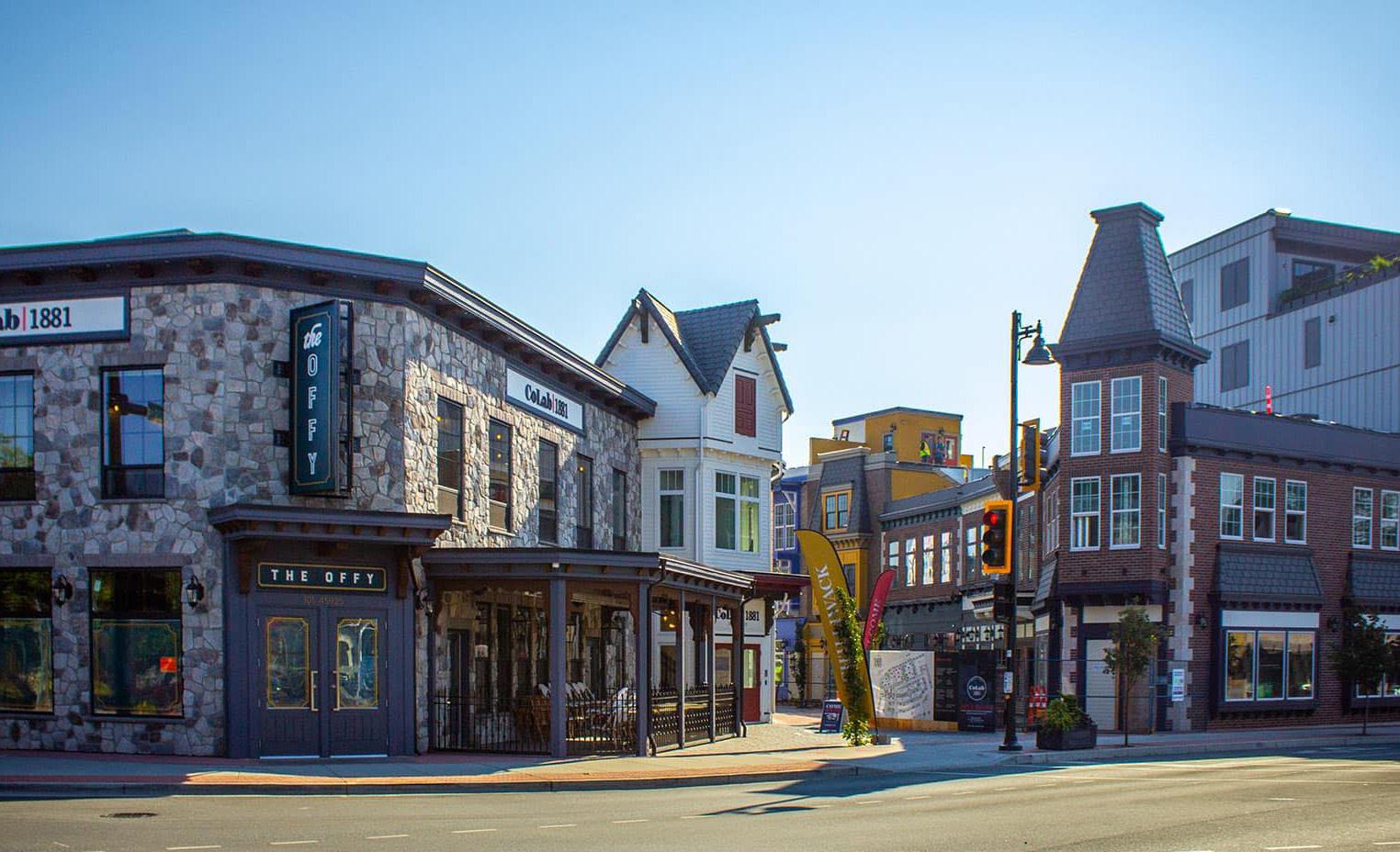
products made in Canada, and hosts a loyalty points system for those who love to shop local.
It’s not just shops and restaurants in this area either. You can get your hair done at Cros. Studios or Private Barbershop, and get a new tattoo or piercing at Memento Mori Studios. You can also check out the rows of claw machines at the Happy Claw arcade, or the Insta Muse instant photo studio for a self-serve hit of dopamine. You can even stay the night at the stylish purple-clad Hotel Morado, located right on Thunderbird Lane.
These luscious local eats are available at events, festivals, and even their own storefronts
IZZY CHEUNG · ARTS & CULTURE EDITOR
The World Wide Food Festival was held on July 6 and featured over 20 local vendors. Just because this event is over, it doesn’t mean you can’t try these scrumptious snacks! All of these vendors can be found at your local farmers market, cultural celebrations, or other fun festivals occurring throughout the summer. Try not to get too hungry as you take a look at some of our highlights — but if you do, satisfy those cravings by giving these vendors a follow and checking them out at their next event!
Betty’s Greek Honey Ballz
This yummy treat truck is home to handmade loukoumades, which are bite-sized Greek donuts dripping in honey syrup. These desserts are topped off with walnuts or toasted sesame seeds, and in some instances, nutella or ice cream. Run by a tight-knit family with an affinity towards Greek food, Betty’s Greek Honey Ballz is a go-to for small, snacky sweets.
Holy Taco and Mexi Eats
Holy Taco and Mexi Eats is a local staple that can be found at almost any event or festival around the Lower Mainland. While they specialize in birria, a Mexican stew that is typically made using goat, lamb, or beef, Holy Taco and Mexi Eats also offers this comforting dish in chicken and vegan options. Their quesabirrias are coated with a crunchy shell of melted cheese and served with a hearty helping of consommé that you can dip your delicacies in.
Little Lebanon Eats
A vendor centred around the gift of family, Little Lebanon Eats treats all those who visit to delectable Lebanese snacks. Their specialty qatayef, pancakes stuffed with nuts or ashta
cream, can be ordered in boxes of 20 — perfect for parties or small gatherings!
Try not to get too hungry as you take a look at some of our highlights — but if you do, satisfy those craving by giving these vendors a follow and checking them out at their next event!
Rolled West Coast
Rolled West Coast puts a fun spin — or should I say roll — on a classic cold treat. Not only is their rolled ice cream pretty to look at, but it’s also a yummy way to stay cool while enjoying the summer weather. Their cookie dough rolled ice cream was the perfect scoop of cold on a scorching hot day.
S For Skewer
S For Skewers is an easy option for quick eats. Their skewers come in three options — beef, lamb, or chicken — and can be bought in groups of three or six. Rice cakes, hot dogs, and deep fried corn are also up for grabs at this local vendor.
With so much to eat, drink, see, and do in District 1881, it’s certainly worthy of a day trip from Metro Vancouver. Take advantage of the summer weather in the next couple months, wander around the different shops and restaurants in the district, and enjoy the natural landscape surrounding it. Chilliwack may seem a bit far from the greater Vancouver area, but this quaint quarter is worth all the hype, especially for those who want to support local businesses. District 1881 is a must-do for your summer 2024 bucket list!

Tatchan Noodle
Known for their Okinawa soba, Tatchan Noodle provides visitors with the experience of eating at a yatai cart without going to Japan. This cute noodle shop has a little counter attached to the truck itself that allows visitors to eat their noodles right when they get them. If you see this little cart rolling around your neighbourhood, be sure to stop by and try a piping hot bowl of their soba!
Tokyo Katsu-Sand
Smushed between pillowy slices of bread are the stars of Tokyo Katsu-Sand — crispy, deep-fried pork, striploin, and shrimp cutlets. Topped with crunchy cabbage, these katsu sandwiches can’t be beaten. Their tonkatsu (pork cutlet) sandwich was topped off with a slightly sweet blend of mayonnaise and tonkatsu sauce.
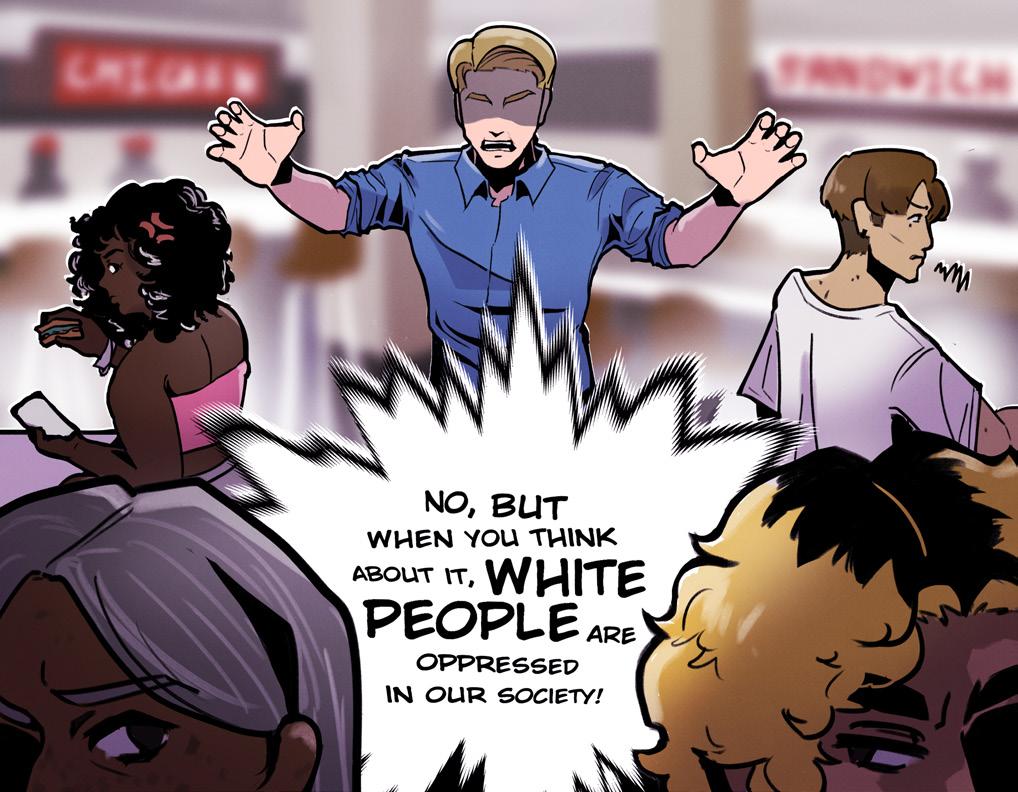
C Icart · Humour Editor
There’s a segment of the population that is experiencing great hardship and oppression, and it’s our duty as members of a society to acknowledge them. It’s the folks who feel left out because there’s a certain word in Kendrick Lamar’s “Not Like Us” they can’t say. Those who are sad they don’t have a history month. The people who are tired of coming in dead last in the Oppression Olympics.
But I’m sure you are already aware of this extremely marginalized segment of the population. Coincidentally, a lot of them are also infected with can’t-shut-upabout-my-imaginary-oppression-itis (wow, these scientific disease names are getting out of control). Sadly, there is no cure.
Symptoms include, but are not limited to:
Speaking over people from other groups because you’re convinced you know better than them. Vehemently opposing affirmative action because you believe that means universities and companies use a random ethnic name generator to accept or hire arbitrary people of colour off the street. Breaking out into hives whenever someone says the word “privilege” within a 10 km radius of you.
It’s truly terrible to watch these people suffer. Imagine constantly processing criticism of systemic racism as a personal attack? It must be so so so stressful! Sometimes to soothe the pain, they quote Martin Luther King Jr. out of context to reinforce their erroneous belief that he would’ve been on their side.
How can you help these people? Well, remember that you don’t have to. In fact, if you’ve already listened to them once, you may be entitled to financial compensation. But if you can find it in the goodness of your heart to help these poor poor people here’s what you can do:
· Sit them down (this might be difficult, they’re still emotionally recovering from that time Rosa Parks sat down and it ruined their lives) and explain to them that rights are not a finite resource. More for others does not mean less for them! Don’t be alarmed if they throw a tantrum during this process, that happens sometimes. Explain to them that there is no monster under their bed called Critical Race Theory who will come and attack them in their sleep. Offer to check under their bed for them as proof. They likely won’t believe you, but hopefully over time you can convince them. Explain to them that there are people out there who benefit from preying on their naiveté. One of those people is whoever told them that Missy Elliot first saying, “I put my thang down, flip it and reverse it” in 2002 marked the birth of reverse racism. This might cause them to block their ears with their indexes while screaming “lalala I can’t hear you.” Be patient.
Scientists are working tirelessly to find a cure to help these poor victims because they are part of a demographic they deem is worth studying. Until then, stay safe out there folks and remember to wash your legs.
Hailey Miller · Staff Writer
As someone who was born disabled, nothing makes me cackle more than the ridiculous remarks of arrogance that grace my everyday life. Happy Disability Pride Month — whether you celebrate it or not. I, frankly, never give it much thought. I do, however, love a good statement that keeps human decency more off-kilter than my Humpty Dumpty balance. Considering all the bullshit that spews out of your mouth, some of you aren’t disabled, and it shows.
“Have you tried eating organic to cure yourself?”
Someone clearly didn’t pass organic chemistry. As a vegetarian of nearly 20 years, I’ve eaten organic almost every day. If you think eating a single organic vegetable is gonna do the trick, please! Who’s the laughing celery stalk now? I’ve been eating more vegetables than you’ve ever consumed and haven’t seen any progress yet. Will report back when I’m cured . . . which won’t be ‘til I’m dead.
“Are your crutches permanently attached to your arms?”
Of course they are! I oh-so-conveniently have them surgically attached by the cuffs and sleep with them like they’re the lover I don’t have. Who needs a sex doll when you can spoon with not one but two sticks?!
“How do you shower?”
I turn on the water, grab my bar of soap that cleanses all the bullshit away, shampoo that makes my hair as shiny as my scintillating clapbacks, and conditioner to make the condescending comments slide right off my spastic muscles. I have a little shower singalong-dance party to “None of Your Fucking Business” written by yours truly. Available on all streaming platforms, alongside “No Scrubs” and “Shower Beer” — which I will desperately need to get through this cringe-worthy inquiry. If you must know, I sit on a chair and contemplate all the ridiculous remarks whilst penning my wittiest responses in a shower stall that’s slipperier than a Slip ‘N’ Slide.
“Is it contagious?”
Achoo! Oh, yes, highly contagious! Just kidding, you can’t catch it if you weren’t born with it. Pff, amateurs. Alas, it’s as incurable as your arrogance. If you stumble, you’ll tumble right into disability land where you’ll be diagnosed with a hefty dose of “Don’t mess with this disabled chick.” Get out of my way, or I’ll trip you up with my spell-binding sticks!
“I’ll pray for you.”
Okay, you do you. That’s really not my thing, but whatever floats your boat. Sprinkling some holy water on me isn’t gonna do the trick to cure me, but you believe whatever you believe, and I’ll be over here, living my best disabled life. Contrary to popular belief, a disabled chick such as myself doesn’t actually want to be cured. Hot girl summer called, and my spasticity answered — soaking up the sun and not giving a fuck!
“Can she have a drink?” asks the wait staff, to someone else at my table, when I’m at a restaurant and simply want to order a drink like a sophisticated bitch.
I really just want to sip my Pinot in peace, but instead, I’m being served an extra side of shock and an interrogation of my ID that’s scrutinized more than a criminal record check. How dare a disabled chick have a valid government photo ID when she doesn’t drive, yet still want to order a nice beverage free from bullshit? Actually, at this point, just bring me the bottle. I’m feeling extra pissed tonight and my disability income doesn’t cover tips for shitty service.
July 22–28
The stars will work it out on the remix

Aries
March 21–April 19
This summer, please take a course on internet safety and the effects of AI. I know you want to become more adventurous and outdoorsy, but asking ChatGPT for hiking directions might not be wise. Choose a proper trail map without whimsy advertisements and strange misspellings unless you’re trying to meet Willy Wonka’s enemy, the “Unknown” in Glasgow.

Cancer
June 21–July 22
Although the month of June has passed, you still spend every night listening to “Heat Waves” by Glass Animals, thinking about the one that “got away.” Bonus points if you also know it from Never Have I Ever. In the footsteps of Devi Vishwakumar, keep pining after your crushes. Eventually, it’ll be the one!

Libra
September 23–October 22
If you’re going to take decades to even look at any notifications, consider investing in ancient scrolls and quills. Your friends could probably find a wild bird on campus to deliver you letters to your dorm, and it would still somehow be quicker than a text back from you (and you still wouldn’t answer).

Capricorn December 22–January 19
As a self-proclaimed homebody, you’re sure to find some new artistic hobby to add to your personality. Don’t worry about buying new supplies though, I’m sure you have enough resin from your small business era, acrylics from your nail tech era, and Monster cans from your quirky crafting era. Hopefully, your never ending search for the perfect aesthetic will end soon.
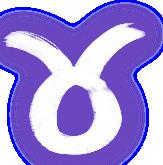
Taurus
April 20–May 20
Will the trip make it out of the group chat? Probably not, but why not try challenging that narrative by travelling to a completely foreign country with no prior knowledge, financial plan, or backup plan for any setbacks? I’m sure your classroom-sized friend group will still be perfectly intact!

Leo July 23–August 22
Your “summer of all summers” should not consist of you starting a podcast. Peaking in high school is a highlight of your teen years, not the adult ones. Trust me, the internet does not need more small groups with microphones weighing in on whether or not animals should be allowed to vote.

October 23–November 21
As the OG iPad kids, you are glued to your phone for hours. You’ll post on your story that you’re on a social media break and deactivating your account, but like Selena Gomez, you’re back in less than an hour. Phone jail cages might be exactly what you need this summer. But beware! The withdrawal from deleting your socials might make you rack up a screen time of up to 107 hours on Olive Garden’s rewards app.

Aquarius January 20–February 18
Ever heard of a self-care day? You need a self-care year. You always find some strange way to make your life harder, from fumbling dates to getting yelled at for sleeping in lecture. At this point, just book a flight to Mars to get your aura points back, there’s no hope for you.

Gemini May 21–June 20
Cancel all of your streaming services, babe; they are useless for you. You have the premium, no-ads subscription of every platform known to man, but still spend hours on TikTok. Oh, you’re searching for part two of the video you just watched to see the episode ending of Everybody Hates Chris? Spoiler alert, it’s not there!

Virgo August 23–September 22
Enough with destroying your phone’s storage. After you’ve taken the perfect selfie, you can delete the bad ones! Start downloading those potentially scamming storage-clearing apps. They might steal your banking info, but at least you’ll be free from those lecture board pictures and Twitter meme screenshots.

November 22–December 21
Your bank account is going to be crying this summer, but at least your Instagram will be popping! Whether you’re in class, at work, or even your distant relative’s house, nothing will prevent you from buying concert tickets the second they drop. It doesn’t matter if you know their whole album or just the few lyrics that went viral; you will be front row, filming. To stand up to everyone calling you a “TikTok fan,” you should get up on stage and have a sing-off with the artist.

Pisces February 19–March 20
Please stop with the subliminal, one-word captions on your Instagram stories with a Pinterest wallpaper of random strangers in the background. News flash, we’re no longer in the 2017 era of Tumblr, your posts don’t make you look mysterious, they make you look corny. For the sake of your reputation and my eyes, cut it out.



